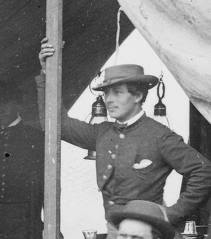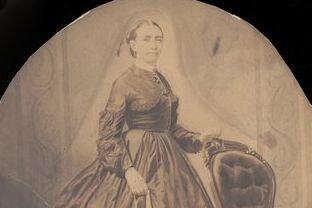
In 1856, twenty-three-year-old widow Kate Warne walked into the office of the Pinkerton Detective Agency in Chicago, announcing that she had seen the company’s ad and wanted to apply for the job. “Sorry,” Alan Pinkerton told her, “but we don’t have any clerical staff openings. We’re looking to hire a new detective.” Pinkerton would later describe Warne as having a “commanding” presence that morning. “I’m here to apply for the detective position,” she replied.
Taken aback, Pinkerton explained to Kate that women aren’t suited to be detectives, and then Kate forcefully and eloquently made her case. Women have access to places male detectives can’t go, she noted, and women can befriend the wives and girlfriends of suspects and gain information from them.

Finally, she observed, men tend to become braggards around women who encourage boasting, and women have keen eyes for detail. Pinkerton was convinced. He hired her.Shortly after Warne was hired, she proved her value as a detective by befriending the wife of a suspect in a major embezzlement case.

Warne not only gained the information necessary to arrest and convict the thief, but she discovered where the embezzled funds were hidden and was able to recover nearly all of them. On another case she extracted a confession from a suspect while posing as a fortune teller. Pinkerton was so impressed that he created a Women’s Detective Bureau within his agency and made Kate Warne the leader of http://it.In her most famous case, Kate Warne may have changed the history of the world.

In February 1861 the president of the Wilmington and Baltimore railroad hired Pinkerton to investigate rumors of threats against the railroad. Looking into it, Pinkerton soon found evidence of something much more dangerous—a plot to assassinate Abraham Lincoln before his inauguration. Pinkerton assigned Kate Warne to the case.
Taking the persona of “Mrs. Cherry,” a Southern woman visiting Baltimore, she managed to infiltrate the secessionist movement there and learn the specific details of the scheme—a plan to kill the president-elect as he passed through Baltimore on the way to Washington.Pinkerton relayed the threat to Lincoln and urged him to travel to Washington from a different direction.

But Lincoln was unwilling to cancel the speaking engagements he had agreed to along the way, so Pinkerton resorted to a Plan B. For the trip through Baltimore Lincoln was secretly transferred to a different train and disguised as an invalid. Posing as his caregiver was Kate Warne. When she afterwards described her sleepless night with the President, Pinkerton was inspired to adopt the motto that became famously associated with his agency: “We never sleep.”

The details Kate Warne had uncovered had enabled the “Baltimore Plot” to be thwarted.During the Civil War, Warne and the female detectives under her supervision conducted numerous risky espionage missions, with Warne’s charm and her skill at impersonating a Confederate sympathizer giving her access to valuable intelligence.

After the war she continued to handle dangerous undercover assignments on high-profile cases, while at the same time overseeing the agency’s growing staff of female detectives.Kate Warne, America’s first female detective, died of pneumonia at age 34, on January 28, 1868, one hundred fifty-six years ago today. “She never let me down,” Pinkerton said of one of his most trusted and valuable agents. She was buried in the Pinkerton family plot in Chicago.







